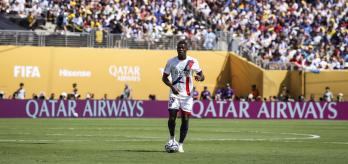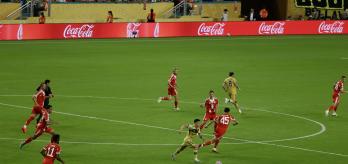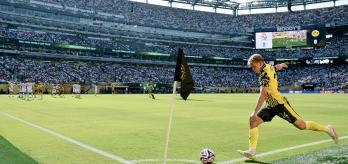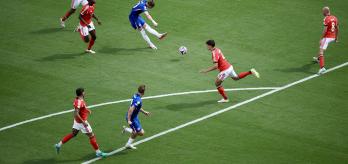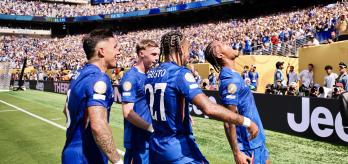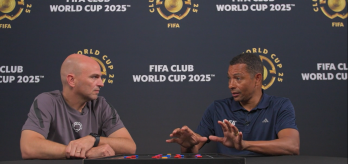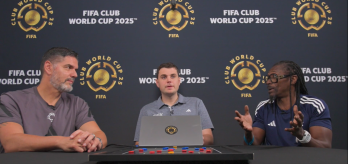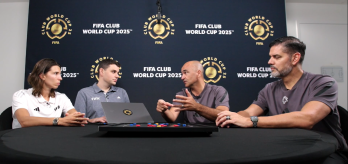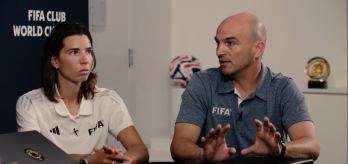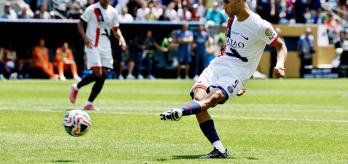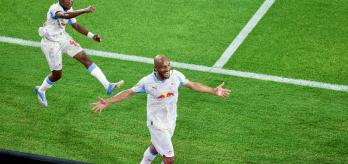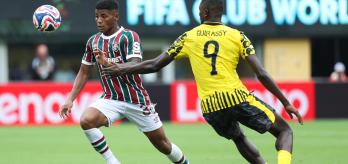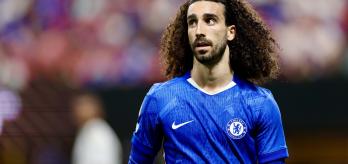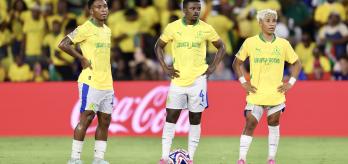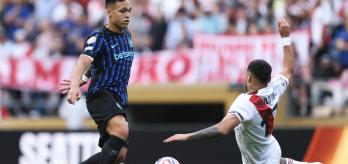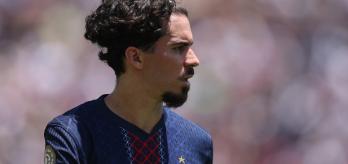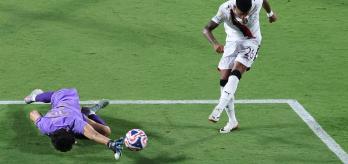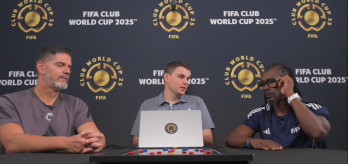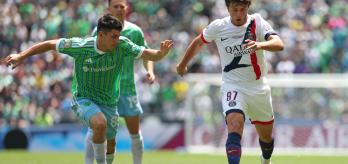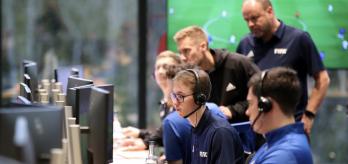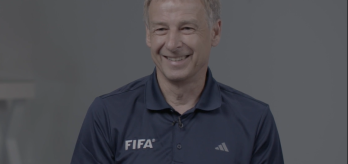Chelsea opened their FIFA Club World Cup 2025™ campaign with a 2-0 win over MLS side LAFC. Central to the London club’s victory was the role Marc Cucurella and Enzo Fernández played in overloading attacking areas. Cucurella’s forward run heavily contributed to the first goal at the Mercedes-Benz Stadium in Atlanta, whereas Fernández directly scored the second whilst operating in the same role during the second half. Technical Study Group (TSG) member Gilberto Silva observed the match, and below, he reveals exactly how Chelsea executed the tactic throughout the game. This article is based on a match review with Gilberto and FIFA’s Arron Ackerman.
Watch match review
First half: Creating the overload
In the first half, Cucurella’s task of overloading attacking areas was visible during periods of the game when Chelsea were in control of the ball. During the build-up, the Spain international would advance from his left-back position down the inside-left channel and towards his team’s attacking line.
His movement as an inverted full-back became a defining feature in the opening 45 minutes, and each forward run created a positional puzzle for LAFC to solve. At times, if Cucurella was deep enough, the MLS side’s right-back, Sergi Palencia (14), would shift over to a central position to cover him, like in clip 1 below. However, this left Chelsea’s wide-left forward, Noni Madueke (11), in open space. When Cucurella was taking up positions in between the LAFC midfield and defensive line, right-sided central midfielder Timothy Tillman (11) was required to track back – a physically demanding task for a player with attacking responsibilities of his own.
Rest defence: The structure enabling the role
Chelsea’s 3+2 rest defence helped balance the team’s overloading tactic throughout the game, explains Gilberto. “What allowed Cucurella to do this? Chelsea stayed with at least five players defending. Reece James didn’t push forward many times, so you had at least three defenders at the back, plus the two midfielders who could apply pressure in the centre. If [LAFC played] the ball over the two midfielders, you had the three defenders at the back to hold play and allow them to recover and close the midfield again.”
If LAFC targeted the space on the left side of the pitch vacated by Cucurella, holding midfielder Moises Caicedo would drop in to support. FIFA’s Performance Analysis metrics reflect Caicedo’s involvement in covering Cucurella, with the Ecuadorian performing more defensive actions than any other player on the pitch. Caicedo also registered eight tackles, which was more than any other player that participated in the first six games of the competition.
Second half: Same tactic, different player profiles
At half-time, Chelsea head coach Enzo Maresca replaced Lavia with Fernández (8). Within several minutes, it was clear that the Argentine World Cup winner was tasked with the advancing role previously held by Cucurella during his team’s possession phases, taking slightly wider starting positions during the build-up to then advance into central attacking areas. Meanwhile, Cucurella assumed Lavia’s role as the second holding midfielder in the Chelsea double pivot alongside Caicedo. The players rotated the role, but the overloading tactic remained consistent.
Despite tactical similarities across both halves, the new profiles of the players involved in the last 45 minutes resulted in noticeable differences in performance, explains Gilberto.
“Cucurella became like a number 6 or 8, alongside Caicedo, doing basically what Lavia was doing. But the difference between him and Lavia was his perception. Cucurella is the kind of player who likes to pass forward. He could see the game in a way which was better for him.”
Fernández, in turn, brought an additional level of threat with his late runs, stemming from his sense of when to penetrate the box. His instinct in these situations was present in the run-up to his goal, which is shown in clip 3 below.
“The interesting thing was the movement during the moment of the [second] goal. We see the perception of a player who is used to playing the position. Cucurella made so many good runs and tried to find himself in this space, but when Enzo came on, the position was very comfortable for him.”







